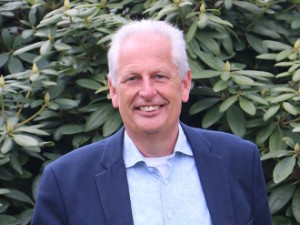- Video Library
- Leo Smit Presents Hy2Care at LSI Europe '23
Leo Smit Presents Hy2Care at LSI Europe '23

Leo Smit
Ir. Leo Smit graduated as a chemical engineer at the Delft University of Technology in 1986. He joined DSM in 1988. Following a 11 year career in R&D, he joined DSM’s Dyneema® Business Unit, where he became responsible for New Business Development.
Here he developed and launched DSM’s first implantable polymer material Dyneema Purity®, currently used worldwide and the golden standard for use in orthopedic reinforcement textiles. He served 4 years as Management Team member in the then newly installed Business Unit Biomedical Materials, responsible for passive biomaterials in orthopedic applications. Subsequently he acted 4 years as Director of Communications at the DSM Innovation Center, responsible for DSM’s (corporate) communications on science and innovation.
In 2016 Leo left DSM to found his own businesses. He started insightfully Innovate, advising and supporting companies both large and small in the field of medical devices. In 2019 Leo joined Hy2Care as CEO, responsible for the company & team development, strategy and financing of the company.
Personal quote:
“Hy2Care is a wonderful company to lead. We have a solid team of strong experts and above all great drive and commitment. Together we can bring forward the injectable hydrogel platform, delivering on the promise of better cartilage healing and much improved outcomes for patients all around the world!”
Leo Smit
Ir. Leo Smit graduated as a chemical engineer at the Delft University of Technology in 1986. He joined DSM in 1988. Following a 11 year career in R&D, he joined DSM’s Dyneema® Business Unit, where he became responsible for New Business Development.
Here he developed and launched DSM’s first implantable polymer material Dyneema Purity®, currently used worldwide and the golden standard for use in orthopedic reinforcement textiles. He served 4 years as Management Team member in the then newly installed Business Unit Biomedical Materials, responsible for passive biomaterials in orthopedic applications. Subsequently he acted 4 years as Director of Communications at the DSM Innovation Center, responsible for DSM’s (corporate) communications on science and innovation.
In 2016 Leo left DSM to found his own businesses. He started insightfully Innovate, advising and supporting companies both large and small in the field of medical devices. In 2019 Leo joined Hy2Care as CEO, responsible for the company & team development, strategy and financing of the company.
Personal quote:
“Hy2Care is a wonderful company to lead. We have a solid team of strong experts and above all great drive and commitment. Together we can bring forward the injectable hydrogel platform, delivering on the promise of better cartilage healing and much improved outcomes for patients all around the world!”

17011 Beach Blvd, Suite 500 Huntington Beach, CA 92647
714-847-3540© 2025 Life Science Intelligence, Inc., All Rights Reserved. | Privacy Policy







